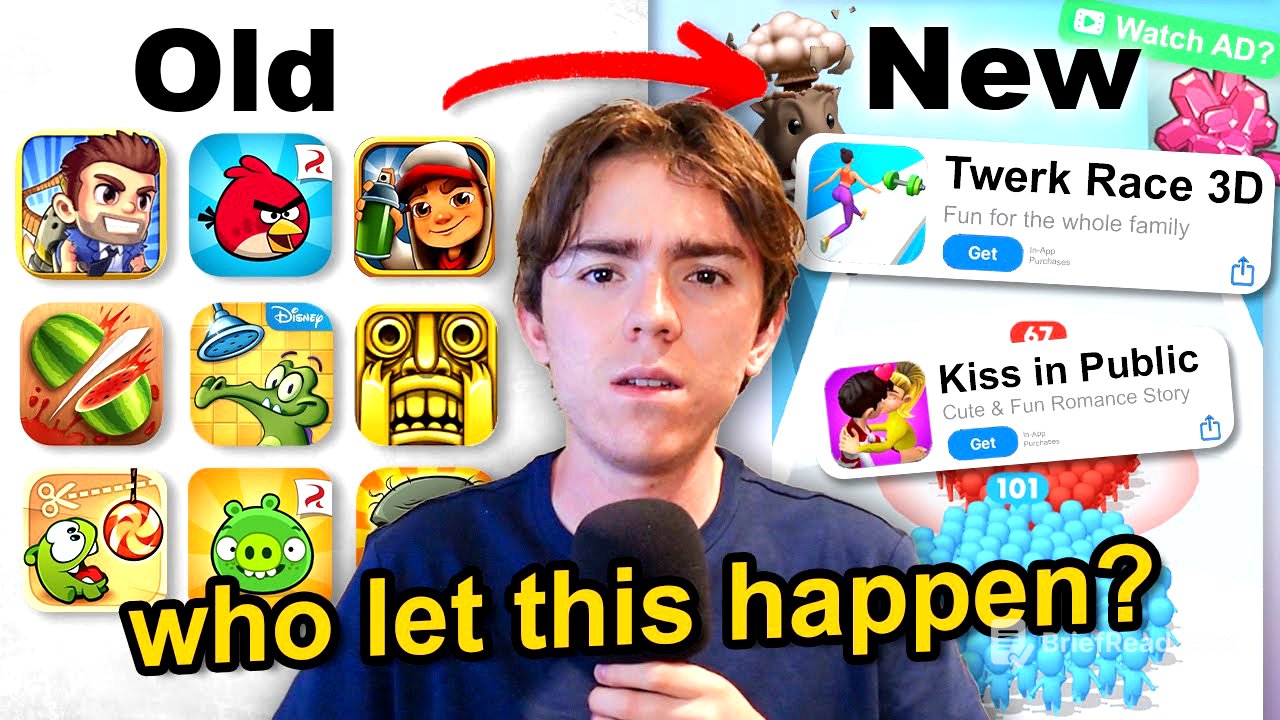TLDR;
The video discusses the decline in quality of mobile games, contrasting the "golden age" of innovative, indie-developed games with the current market dominated by free-to-play titles designed for monetization over gameplay. It explores how the introduction of in-app purchases led to a shift in design philosophy, using Angry Birds 2 as a prime example of a once-beloved franchise prioritizing revenue through manipulative tactics. Despite the prevalence of such practices, the video encourages viewers to appreciate the good games that still exist and to enjoy what they like, while acknowledging the industry's shift towards profit-driven design.
- Mobile gaming's "golden age" was driven by innovative, indie-developed games.
- The introduction of in-app purchases led to a focus on monetization over gameplay quality.
- Games like Angry Birds 2 exemplify the shift towards manipulative tactics to generate revenue.
- Despite the decline, good mobile games still exist, and personal enjoyment should be prioritized.
Introduction [0:00]
The speaker introduces the topic of mobile gaming and how its current state differs from the fond memories many have of older mobile games. The speaker notes that modern mobile games often feel forgettable and are perceived as worse than their predecessors, and the video aims to explore the reasons behind this decline in quality, going beyond simple explanations like excessive ads or poor visuals.
The Golden Age of Mobile Gaming [1:39]
The introduction of the iPhone and the App Store in 2007 marked the beginning of mobile gaming's golden age. The App Store allowed independent developers to easily distribute their games to a wide audience, leading to the rise of popular titles like Angry Birds, Cut the Rope, Subway Surfers and Jetpack Joyride. These games were often created by small teams and were specifically designed for the iPhone's hardware and touchscreen, offering intuitive and innovative gameplay experiences. Major gaming companies initially struggled to adapt, often porting console games to mobile without understanding what made mobile gaming appealing.
The Shift Towards Monetization [4:33]
Around 2011-2013, the mobile gaming market began to change due to the introduction of in-app purchases in 2009. Initially, in-app purchases were a healthy addition, allowing players to try games for free and then pay to unlock the full experience or remove ads. However, developers soon realized they could generate more revenue by designing games with multiple in-app purchase opportunities, such as buying coins, making levels easier, or gambling. This led to a shift in focus from creating genuinely fun games to designing games that maximized monetization.
The Downfall: Angry Birds 2 [7:01]
Angry Birds 2 is presented as a prime example of this shift towards monetization. The game is filled with in-app purchase opportunities, including gems, chests, a card tower (gambling game), pearls, a wheel of chance, daily events requiring gems to continue, a battle pass, loot boxes, and cooldowns. The game uses a card system that is designed to entice players to spend money, with levels purposefully made slightly too long or difficult for the amount of cards given. The energy point system further encourages spending, as players have a limited amount of energy and must spend it to retry levels. The levels themselves are designed to force players to use more cards, increasing the likelihood of running out and spending money.
The Current State of Mobile Gaming [10:11]
Mobile games across the board have largely switched to a philosophy of prioritizing making good money over making a good game. Many games today don't even bother with interesting gameplay elements, as it has been proven financially beneficial to prioritize player retention over actual gameplay. This results in games that are either brain-dead easy or frustratingly difficult, lacking the respect for players' ability to solve challenges that characterized older mobile games. The shift from independent developers to large corporations further exacerbates the problem, as these corporations are primarily focused on making money.
Conclusion [11:09]
The decline in mobile gaming quality is attributed to the change in design philosophy, where games are no longer actively trying to be good but are instead designed to maximize revenue. Despite this, the speaker acknowledges that good mobile games still exist and encourages viewers to appreciate them and enjoy what they like. Understanding the reasons behind the current state of mobile gaming can even lead to a certain appreciation for the soulless, money-hungry products that dominate the market.









